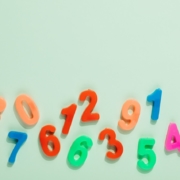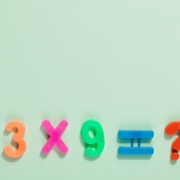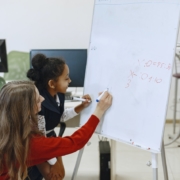Printable Lesson Plan on Introduction to Number Theory
Lesson Title:Introduction to Number Theory
Lesson Objective: Students will understand the basic concepts of number theory and be able to apply them to solving problems.
Materials:
Introduction (10 minutes): Start the lesson by asking the students if they know what the word “theory” means. Write the definition on the board (a set of ideas or principles that are proposed to explain a certain phenomenon) and ask for examples of other theories they may have heard of (e.g. the theory of evolution, the theory of gravity).
Explain that today we will be learning about a type of theory called number theory, which deals with the properties and relationships of numbers. Write the word “numbers” on the board and ask the students to give examples of different types of numbers (e.g. whole numbers, fractions, decimals). Body (30 minutes):Divide the class into small groups and provide each group with a set of manipulatives (such as base-10 blocks or counting bears). Explain that they will be using these manipulatives to help them understand some of the concepts of number theory.
First, review the concept of prime numbers. A prime number is a whole number greater than 1 that is only divisible by 1 and itself. Write the numbers 2, 3, 5, 7, 11, and 13 on the board and ask the students to identify which ones are prime numbers. Then, using the manipulatives, have the students physically show the prime factorization of a composite number (e.g. 12 = 2 x 2 x 3).
Next, introduce the concept of greatest common divisor (GCD) and least common multiple (LCM). GCD is the largest number that divides two or more given numbers without leaving a remainder. LCM is the smallest number that two or more numbers will divide into without leaving a remainder. Have the students work in their groups to find the GCD and LCM of a set of given numbers using the manipulatives.
Finally, introduce the concept of modular arithmetic. Modular arithmetic is a system of arithmetic for integers in which numbers “wrap around” after a certain value, called the modulus. For example, in a clock with the modulus 12, 3 hours after 9 is 9 + 3 = 12, which is equivalent to 12 mod 12 = 0. Have the students work in their groups to solve a set of problems using modular arithmetic.
Conclusion (20 minutes):
Bring the class back together and ask for volunteers to share their solutions to the problems they worked on in their groups. Write the solutions on the board and ask the class to check their work.Provide the students with a set of practice problems to complete as homework. Remind them that number theory is a useful tool for solving a wide range of problems, not just in math but also in computer science, cryptography, and other fields.
Assessment:
Note: This is a rough outline for a lesson plan and may need to be adjusted depending on the level of your students and the resources available in your classroom.










